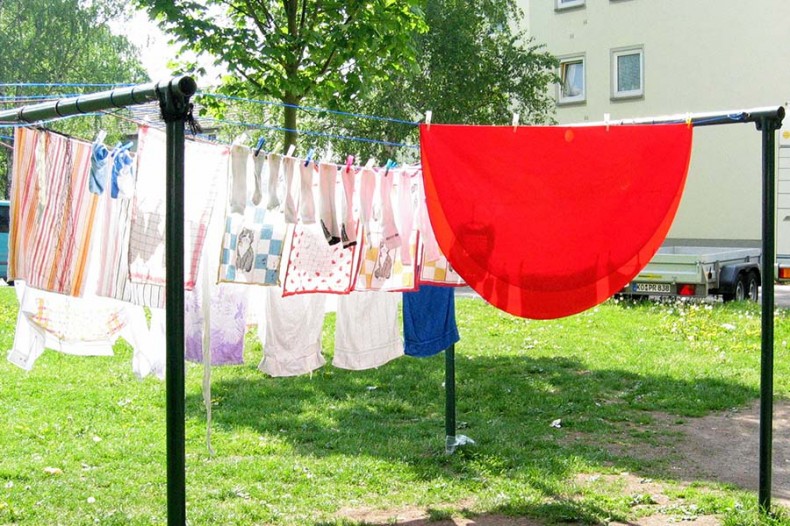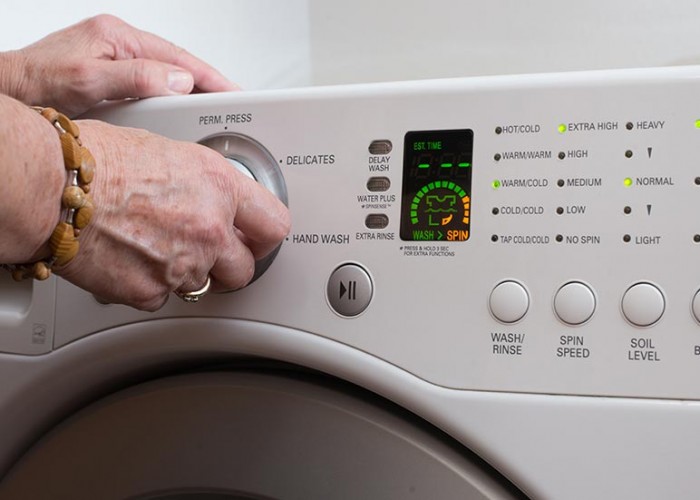Cutting Energy Waste
Load up on savings with these laundry tricks
By Pat Keegan and Amy WheelessThe average American family washes about 300 loads of laundry per year, and all that laundry uses a lot of energy. Here are some easy ways to reduce your energy use in the laundry room.
Consider buying more efficient appliances.
Washers with Energy Star® certification use about 40 percent less water and 25 percent less energy than standard washers. Energy Star washers can be top-loading or front-loading machines; however, front-loading machines are generally more water and energy efficient. Energy Star dryers use 20 percent less energy than standard dryers.
Get out of hot water.
Almost 90 percent of the energy consumed by your washer is used to heat water — but most loads can be just as easily cleaned with cold water. Cooler water is also easier on your clothes. If you need to use hot or warm water on a particularly dirty load of laundry, a well-insulated water heater will help decrease the costs of using warmer water.
Do fewer loads!
When possible, wash a full load of clothes. When you must do a smaller load of laundry, adjust your machine’s water level settings.
Spin hard.
A great way to reduce the amount of drying time is to wring as much water out of your laundry as possible in the washing machine first. Use a high spin setting. Also, don’t overfill the dryer.
Use your dryer’s features.
If your dryer has a moisture sensor, use it rather than guessing how long loads will need to dry. A dryer’s cool-down cycle uses the residual heat to finish drying your clothes, without using as much energy.
Dry like with like.
Heavy fabrics, like towels and blankets, should be dried separately from lighter fabrics, such as T-shirts.
Live lint free.
Clean the lint trap on your dryer regularly to help air circulation. Periodically use a vacuum nozzle to clean under or behind the lint filter, where lint can also get caught. If you use dryer sheets, scrub the filter clean about once a month — dryer sheets can leave a film on the filter that reduces air flow.
Remember safety.
Inspect your outside dryer vent regularly to make sure it is not blocked, and periodically work with a professional to clean your dryer ducts. Making sure the duct and vent are clear helps your dryer work more efficiently, and can also prevent a fire — more than 15,000 fires per year are sparked by clogged dryer ducts and vents. If possible, move the dryer closer to an exterior wall to shorten the dryer duct and ensure the duct is as straight as possible. This reduces potential clogging and increases efficiency.
Use your solar-powered dryer.
Air drying clothes definitely cuts energy use! You can also tumble dry clothes until damp, then line dry them until fully dry. This step can prevent that “crunchy” feel that line-dried clothes can have.
About the Author
This column was co-written by Pat Keegan and Amy Wheeless of Collaborative Efficiency. Patrick Keegan writes on energy efficiency for the National Rural Electric Cooperative Association, the Arlington, Va.-based service arm of the nation’s 900-plus consum-
Learn more about saving energy when doing laundry
-
Share this story:






